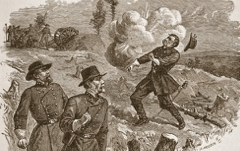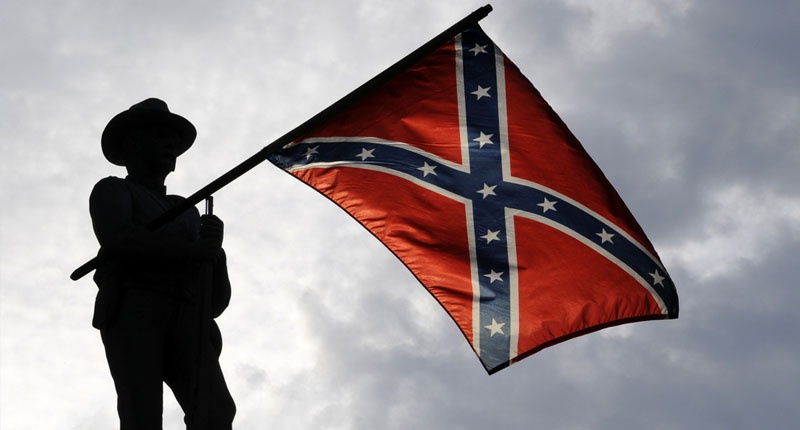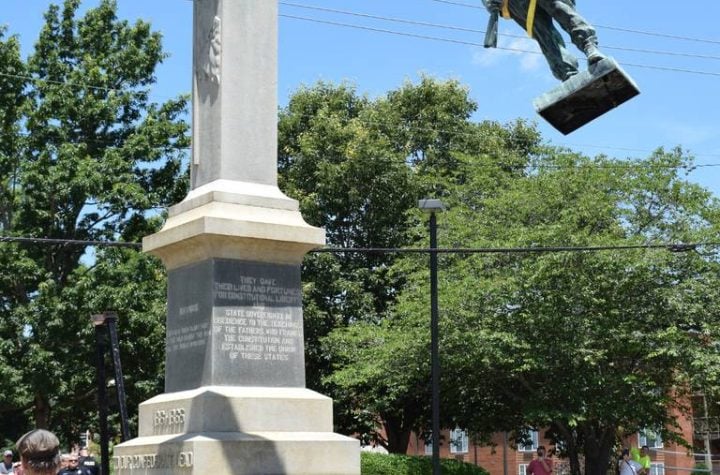Have you ever seen the The Polk Battle Flag? It features the well-known Southern Cross, with an upright cross with the colors reversed. Here’s some things we know about the man behind that banner.
Leonidas Polk, the son of a distinguished Revolutionary War officer, was one of the South’s most beloved generals. He attended the U.S. Military Academy at West Point with fellow graduate Robert E. Lee, who later wrote about Polk: “as a model for all that was soldierly, gentlemanly, and honorable.”
During his last year at West Point, the would-be artillery officer decided to take on a new calling as a clergyman. He rose to position of Bishop in the Louisiana Episcopal Church.
For twenty years, Bishop Polk led a quiet and comfortable life of service to the church. When the Civil War began, he traveled to Richmond to meet with his old friend, newly elected Confederate President Jefferson Davis. Davis welcomed him back to the army and commissioned him as major general.
In early November 1861, Polk faced up-and-coming Union brigadier Ulysses S. Grant at Belmont, Mo., in what would be the bishop-general’s first battle. Grant raided and destroyed a Confederate camp. But Polk rallied his Rebel troops and drove the Yankees back, nearly surrounding Grant’s 3,000-man force, and repossessed the field.
Polk continued on the fight in battles in the West including Shiloh, Perryville, Murfreesboro, and Chickamauga, against formidable Federal opponents – Grant, Sherman, and George H. Thomas. Henry Watterson a former staff member later wrote:
“In battle he was a daring old man, with his heart in the fray, and his best faith on the result; riding through shot and shell from point to point, unconscious of danger….”
On June 13, 1864, the evening before a Union attack, Leonidas Polk wrote to his daughter: “Do always what is right, not calculating what is expedient, but try and find out what is right, and with a pure heart and true devotion go straightforward and do it.”
The next day as Polk, Johnston, and Hardee were scouting enemy artillery positions from an exposed ridge near Marietta, Georgia. General Sherman’s battery opened fire. Polk was stuck and killed by a cannon shell. As one man later put it, “his soul was in heaven before his head hit the ground.”
Polk’s men in a nearby gun battery cried out, “General Polk is killed!”
Johnston and Hardee both wept bitterly. With his hand on Polk’s head, Johnston said,
“We have lost much! I would rather anything than this!”

But Sherman, who had always been scornful of religious devotion and the clergy, coldly reported:
“We killed Bishop Polk yesterday, and have made good progress…”
Confederate General Joseph E. Johnston wrote:
“…you are called upon to mourn your first captain, your oldest companion in arms, Lieutenant General Polk. The Christian, patriot, soldier, has neither lived nor died in vain. His example is before you, his mantle rests upon you.”
Sam Watkins, a Confederate soldier who fought throughout the entire war, later became a writer and recorded these words about Polk:
“My pen and ability is inadequate to the task of doing his memory justice. Every private soldier loved him. Second to Stonewall Jackson, his loss was the greatest the South ever sustained.”
Yes, Polk’s Battle Flag is still flown today. And now we know why.





More Stories
Sad Woke Charlottesville liberals Melt down infamous statue of Robert E Lee
NC Appeals Court rules for Town of Louisburg in removal of Confederate monument
The Confederate Flag History: Everything You Should Know